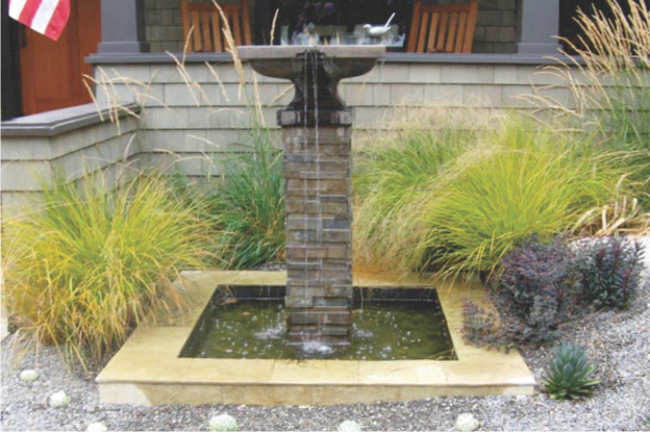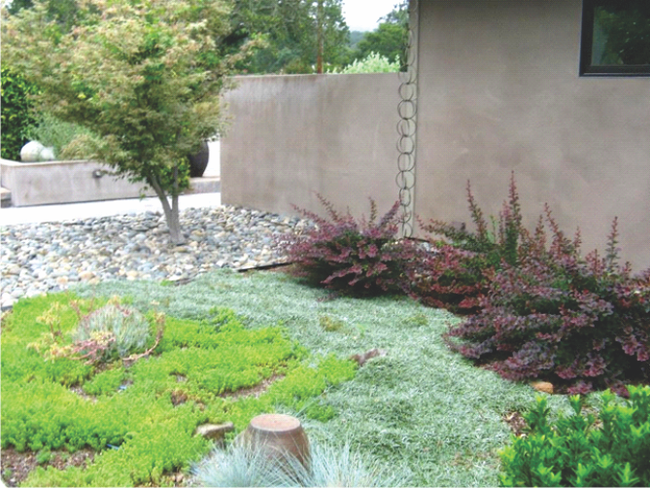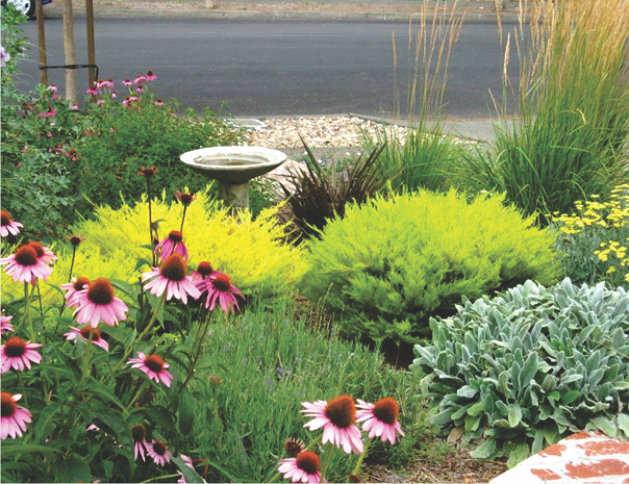Just like we periodically redo the interior design of our homes, we may also need to redo the landscaping around our homes. A wide range of reasons may prompt a redesign. Perhaps you've inherited a yard from previous owners whose landscaping is just not your style. Maybe you've added an extension onto your house that requires making changes to your landscaping. Maybe you want to eliminate your lawn. Or maybe your landscaping was done decades ago, and it's simply old and tired.
For whatever reason, there's a way to simplify the process of landscape design, which can seem overwhelming to those who've never attempted it before. Basically, landscape design aims to combine practicality with aesthetics. A more formal definition of the purpose of landscape design: “the creation of exterior living spaces, [integrating] a variety of elements to achieve functional, beautiful spaces for outdoor living.”

• Unity – consistency, elements fit together to create a whole
• Repetition – placement of the same type of element – for example, boulders-- in various places throughout the landscape; repetition helps create a sense of unity
• Proportion – choosing sizes of elements that are neither too large nor too small relative to the size of your house and other permanent features of the landscape
• Focal points – one of more central points of interest
• Contrast – choosing plants that contrast in color and texture
• Simplicity
The design process really begins with thinking about and deciding on your goals for the new landscape. What functions do you want it to serve? Do you want low maintenance? To attract pollinators? To reduce your water bill? What style do you want — cottage-garden, minimalist and contemporary, woodsy? Clarifying your goals is key.
Once you've established your goals, the following steps will guide you through the process:
• Do a site analysis – Where are the hot spots? The wet spots? Shade? Wind direction?
• Measure the site – Measure house, hardscape, and permanent trees or shrubs
• Sketch a site plan – The site plan should include all the elements you measured. Permanent plants should be drawn at their maximum width. This requires only simple tools, like graph paper, rulers, triangles, and circle templates, available in art and office supply stores. Make copies of this base plan.
• Do a conceptual plan – Using your base plan, sketch out different ideas or concepts for placing hardscapes and groups of plants.

Planting should take place only after you've prepared the soil by adding generous amounts of compost. Avoid using chemicals and synthetics that harm the soil's fertility. Till the soil as little as possible. Install drip irrigation for water efficiency. Mulch after planting. Finally, include a wide variety of plants rather than just one or two species to promote biodiversity and maintain a healthy ecosystem. As the photos show, it's very possible to design a landscape that's lush, beautiful and water-wise.
Napa Master Gardeners are available to answer garden questions by email: mastergardeners@countyofnapa.org. or phone at 707-253-4143. Volunteers will get back to you after they research answers to your questions.
Visit our website: napamg.ucanr.edu to find answers to all of your horticultural questions.
Photo credits: Cathy Baskin
Resources:
Healthy Garden Tips
Choosing the Right Plant, Right Place https://ucanr.edu/sites/ucmgnapa/files/153367.pdf
Drought Strategies for Home Landscapes https://ucanr.edu/sites/ucmgnapa/files/354845.pdf
Step-by-Step Garden Design https://napamg.ucanr.edu/GardenDesign/
City of Napa
Water-Wise Gardening in the Napa Valley https://napa.watersavingplants.com/
